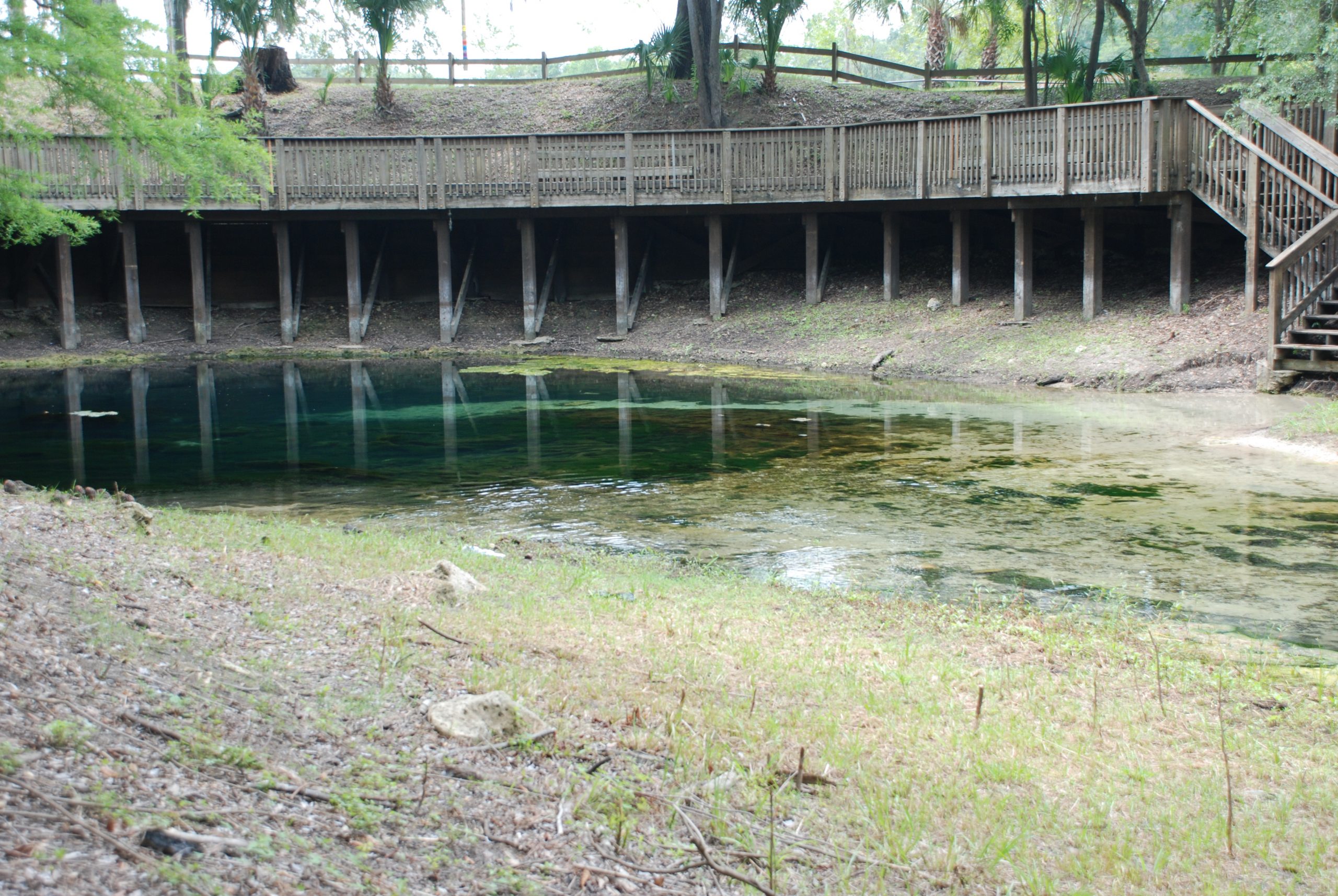If you live in Florida then you are probably aware of the beauty of the springs on the Suwanee River. What you might not be aware of is the fact that pollutants are making their way into Branford Spring, a popular swimming hole that feeds the protected Suwanee River because the state lets farmers and sludge companies dump waste. In some cases, human waste. In fact, H&H Liquid Sludge Disposal has dumped nearly 600 tons of waste a year on the nearby Bahia grass farm the company also operates.
There are 83 sites where the Department of Environmental Protection has allowed landowners to dump “Class B” waste (rated due to how much bacteria and heavy metals it contains after treatment). Throughout the state, 98,000 tons of it were dumped, over 82,503 acres in 2013 alone. We don’t have updated number for 2014-present.
And, of the active sites, 8 are in an Outstanding Florida Waters basin (the state supposedly prohibits liquid wastewater discharges), 24 are in the Springs Protection Area, where rainwater quickly flows underground to recharge the aquifer system and drinking water supply, and 44 are in a basin that drains directly into a stream, canal or lake. Still, others are a mixture of the three. This is insanity.
But, while the state sets limits on how nitrogen can be dumped, it almost never puts a cap on phosphorus, the main culprit in toxic algae blooms.
RELATED ARTICLES:
- Florida Officials Now Seeding Poisonous Chemicals In Wind
- The Release of GMO Creatures Into the Wild
- Army Corps of Engineers OKs permits for Florida Pipeline Through Most of State- EPA Says Dangerous!
From the article:
“Citing concerns about phosphorus pollution, lawmakers in 2007 banned Class B waste in the Lake Okeechobee, St. Lucie River and Caloosahatchee River watersheds. In response, some plants began treating waste to the higher Class AA standard, which contains less bacteria and heavy metals, but the same amount of nitrogen and phosphorus. Others simply moved their dump sites into other watersheds.
‘What we’ve now got is excess phosphorus ending up in our water resources,’ said Jake Varn, who served under Gov. Bob Graham as secretary of the Department of Environmental Regulation, DEP’s predecessor.”
Even though some landowners’ dirt contained amounts of phosphorus that couldn’t be measured on the chart, they were granted dumping permits anyway.
In an attempt to protect the springs and people’s access to clean water, this year Sen. Gary Farmer, D-Broward, filed a springs protection bill that “included a Class B waste ban in small areas near the Silver, Rainbow and Wakulla springs.” Sadly, the bill was too specific and didn’t protect enough area.
This entire thing is a mess.
Elevated levels of phosphorus contribute to algae growths and excessive algal growth leads to eutrophication (when the water becomes rich in dissolved nutrients and deficient in oxygen- and animals die from a lack of oxygen).
There are a host of serious concerns related to too much phosphorus in our waters:
- Risk to human safety from the threat of harmful algae blooms near drinking water intakes
- Unstable fish communities
- Declines in property values from loss of recreational opportunities and aesthetics
- Disruptions in food web that cause negative impacts on species and their habitat
- Degraded habitats especially nearshore, wetlands, and tributaries
- Beach fouling and loss of tourism revenue
- Added costs to municipalities, industry and the public to protect drinking water sources, and restore recreational areas.
How much more trauma can our state handle?
Source: TC Palm












